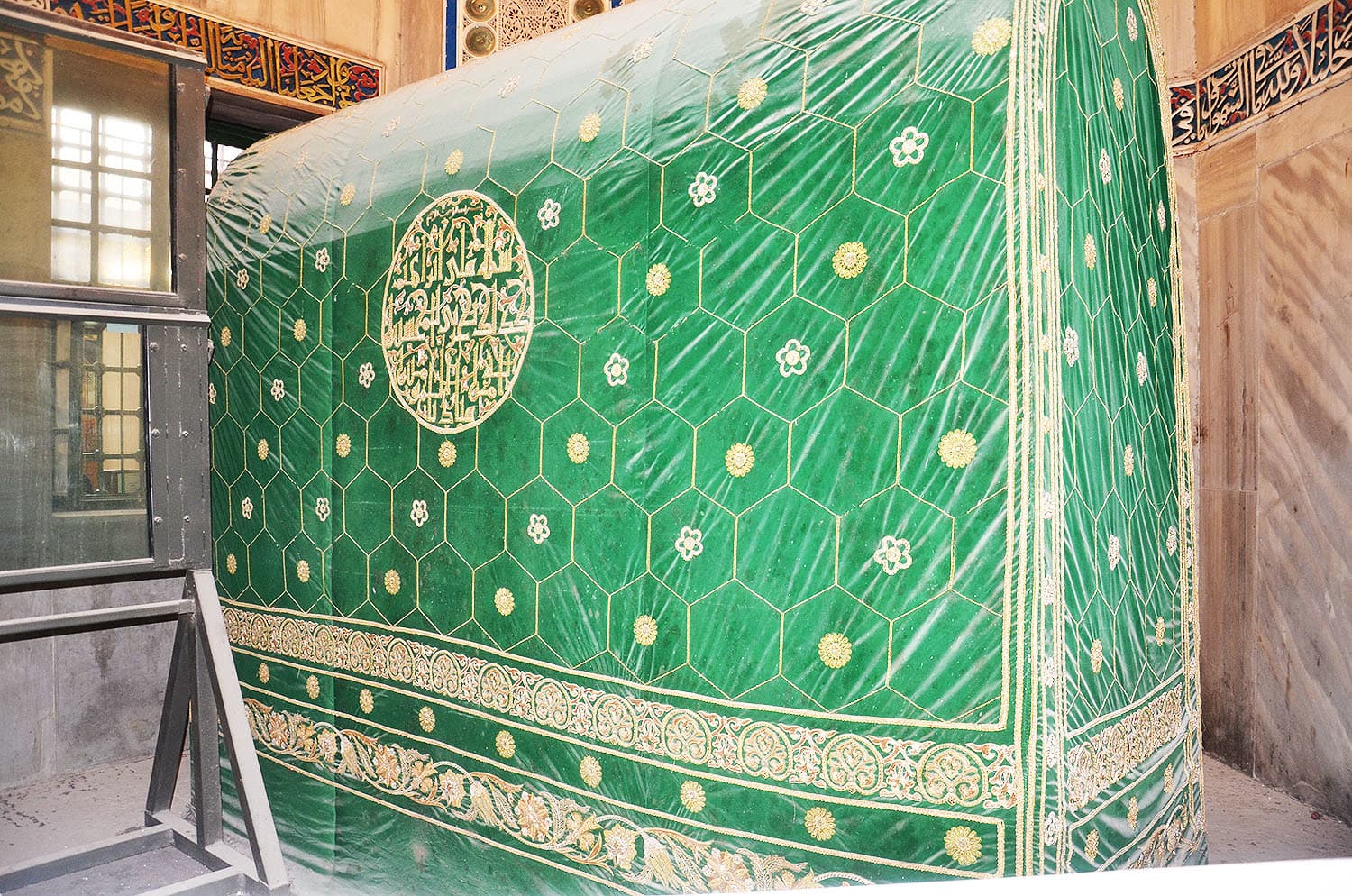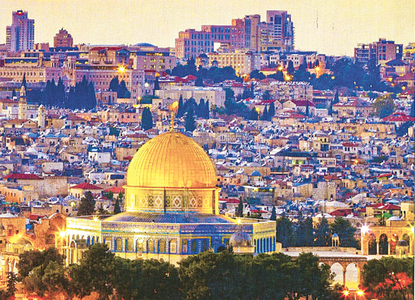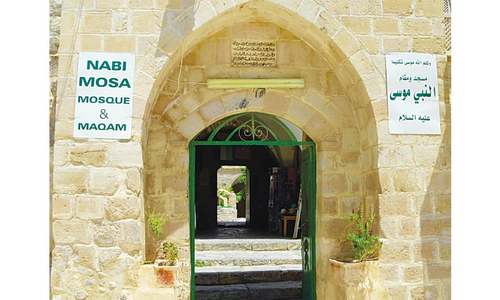As a Pakistani who immigrated to Canada, I had always pledged to myself that the first country I would travel to after acquiring citizenship and a Canadian passport would be Israel.
Having heard stories of the Holy Land from friends, my excitement knew no bounds. That said, I was apprehensive aplenty because I had heard accounts of people who were denied entry by Israeli customs owing to their Pakistani and/or Muslim background.
On Feb 17, 2016, loaded with prayers and advice, I embarked on a British Airways flight to Israel. I arrived at the Ben Gurion airport in Tel Aviv at 5am local time.
Upon arriving at the Israeli customs, an officer interrogated me in a sombre voice: Do I know anybody in Israel? Do I know Arabic? Have I ever been to the Middle East?
He also asked to see my Pakistani passport, which I wasn't carrying with me since it had expired.
Taking my Canadian passport, he pointed me towards a waiting area. I had earlier anticipated such a scenario and hence had brought a copy of a Lonely Planet Guide on Israel, which I then proceeded to read.
After 30 minutes, I was called in a room by another customs officer, who asked me my purpose of visit, and why I had chosen to visit Israel and not some other country. Slowly and painstakingly, he typed my answers into his computer.
After peppering me with a few other questions pertaining to my move to Canada and my profession, the officer asked me to write my full name and e-mail address on a piece of paper and then told me to wait in the same waiting area.
An hour went by before I was called by a young lady officer for another question-and-answer session. Seated in a room which had a picture of the Dome of the Rock in Jerusalem and an Israeli flag on display, I answered just about every question under the sun.
The session lasted for about 45 minutes. In the end, I was told that she would verify all the information I had provided.
Following a wait of four hours since I had landed, a lady came to me with my passport in her hand. She handed me an entry visa on a separate piece of paper and directed me to the luggage machine.
I collected my backpack and immediately phoned my father to inform that I was finally going to Jerusalem!
A 45-minute drive from Tel Aviv, Jerusalem is the Holy city for Judaism, Christianity and Islam. The city is divided into Muslim, Jewish, Christian and Armenian quarters.
I arrived in my hostel, located in the old city, at noon. Not wanting to waste anymore time, I left my backpack in my room, I decided to go first to the Al-Aqsa mosque.
The passage to Al-Aqsa from Jaffa Gate (one of the many gates of the walled city) passes through the beautiful traditional markets of the old city.
Upon arriving at the entrance of Al-Aqsa, the guard on duty asked to see my passport and then told me to read Surah-e-Fateha as verification that I was Muslim (there are also designated hours for non-Muslims). I did and entered.


The capacious mosque was endearing in its simplicity, and sparsely filled with devotees. I explored its interiors and then said a prayer.
Opposite to the mosque is the gold-plated Dome of the Rock, one of the most stunning and photographed landmarks around the world. The gilded dome of the edifice stood out against a pale sky.




I gazed at it for a long time, mesmerised and utterly humbled, before going inside to see the place where Prophet Muhammad (PBUH) is believed to have ascended to the heavens during the journey called Mairaj.

Next, I visited the Wailing or Western Wall, which is the holiest place, where Jews are permitted to pray. Here, I saw locals Jews mourning and praying in front of the ancient limestone wall.
I then made my way to the Church of the Holy Sepulchre, considered the place where Jesus' tomb is located.
A sacred place for Christians, many believe it is the site of the most critical event in history: The spot where Christ resurrected from the dead.
A quiet calm descended upon me as the day drew to an end. Watching these believers at each of the three sites filled me with a profound peace; moving me with their acts of faith.

After spending about three days in Jerusalem — I, along with a fellow traveller from India, whom I met at the hostel I was staying at — decided to go to Bethlehem and Hebron.

Bethlehem is a 30-minute drive south of Jerusalem. It's a predominantly Palestinian city, and is famous among travellers for the iconic Church of Nativity — the birthplace of Jesus.
From Bethlehem, we arrived in Hebron, which is under both Palestinian civil control and Israeli military control. The highlight of the city is the Cave of the Patriarchs. It is sacred for Muslims, Jews and Christians because it is where the shrines of Prophet Ibrahim, Ishaq and their wives are located.


After passing through two security checkpoints, we arrived at the Muslim side of the site. It was spiritually awakening to be inside the burial places of some of the most revered Prophets of Islam, Christianity and Judaism.
Also making the acquaintance of a Canadian traveller I met at my hostel from Lithuania, we decided to go to Ramallah, a Palestinian city in the West Bank. At a 35-minute drive from Jerusalem, we did not encounter any checkpoints
My hostel was just a minute's walk from the main bus station in downtown Ramallah. Deciding to spend a night in Ramallah, we wasted no time dumping our backpacks in the hostel, and heading off to explore the city.



Ramallah is a lively and bustling Palestinian stronghold. It is where the mausoleum of Palestinian Liberation Organisation (PLO) leader Yasser Arafat is located. We cruised through a few local bazaars, before making a perfunctory stop at a museum and smoked, by far, the best sheesha I've ever had at the popular Baladna Café.
We were fortunate to befriend some interesting locals. One wouldn't think so but they lead a fairly normal life. In fact, I hadn't seen the amount of luxury cars anywhere else in Israel as I did in the city of Ramallah in the West Bank.
That said, there are refugees camps situated at a 15-minute drive from Ramallah, where a lot of Palestinians are living in abject poverty.
The next day, I went to the Palestinian city of Nablus. It takes me a little over an hour to get there on a local bus. Both Ramallah and Nablus have remained conflict zones during clashes between Israeli soldiers and Palestinians in the past.


I found it a bustling, robust city during my few hours of stay. After losing myself in the bazaars of Nablus for a while, I tried the famous dessert kunafeh, which is a cheese pastry soaked in sweet and sugar-based syrup, famous in Arab countries.
Safely, it was the most delicious thing I had tasted since my arrival in Israel.
Later, I treated myself to a calming Hammam experience (Turkish bath) at the Hammad Al Shifa. I left there feeling mentally cleansed.
Nablus is revered for its production of olive oil soaps and I was eager to see what the fuss was about. Much to my dismay, all the factories were closed since it was late in the afternoon, but I did later manage to grab some locally-made olive oil soaps from a small shop, and found them to be worth the hype!
It was time for me to leave the city. I hopped on a bus and returned to Ramallah. From there, I took another bus to Jerusalem and then to Tel Aviv, where I spent the last day of my sojourn.
I sampled what I could in a day. In the old part of Tel Aviv, known as Jaffa — a pre-dominantly Muslim-populated area — I had the best tuna pizza, bought last-minute souvenirs and also managed to soak up the wonderfully warm Mediterranean sun at the Old Jaffa beach.

It was a Friday night which, in Israel, denotes Shabbat: Judaism’s day of rest. There was sparse traffic on the roads and everything started to close early in the evening.
The next day, I reluctantly packed to leave the Holy Land for Canada; nonetheless, thrilled to finally have Israel checked off my bucket list.
—All photos by the author















































